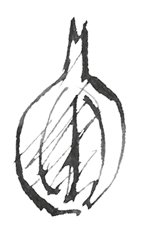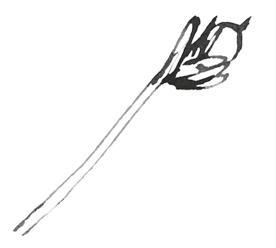From W. T. Thiselton-Dyer 26 June 1874
10 Gloucester Road, Kew
June 26. 1874
Dear Mr Darwin
I wrote you this morning a very hurried letter to thank you for the exciting intelligence you were so kind as to send me.1 I have been examining the leaves and seeds more attentively.2
As I have already written to you the “little glandular channelled or folded leaves” are those of Erica Tetralix Of this I feel absolutely certain.3 No doubt this is abundant on the ground where the Pinguicula grows. The small sycamore shaped leaf quite puzzles me. I am inclined to think that it may be a cotyledonary leaf in which case there would be less chance of identifying it. There were besides certainly two germinating plantlets—each with two tiny seed-leaves and the fragment of a tigellum4 attached to them. They looked as if they belonged to different species and one I think was Cruciferous. There was also the fruit of a Carex with seed inclosed

I have tried hard to make out the species. It may be C. flava but I can’t be quite sure Then there was the end of a branchlet of the inflorescence of a Juncus—J. supinus, Moench.5 This was probably what you thought might be Rumex and there is a certain resemblance It was something like this

I have been wishing for ever so long to set to work diligently at Nepenthes6 But I am very much in arrear with works of obligation and I shall have no opportunity of
CD annotations
Footnotes
Summary
Identifies seeds adhering to leaves of Pinguicula [see Insectivorous plants, p. 369].
Letter details
- Letter no.
- DCP-LETT-9516
- From
- William Turner Thiselton-Dyer
- To
- Charles Robert Darwin
- Sent from
- Kew
- Source of text
- DAR 58.1: 67–8
- Physical description
- AL inc †
Please cite as
Darwin Correspondence Project, “Letter no. 9516,” accessed on
Also published in The Correspondence of Charles Darwin, vol. 22


